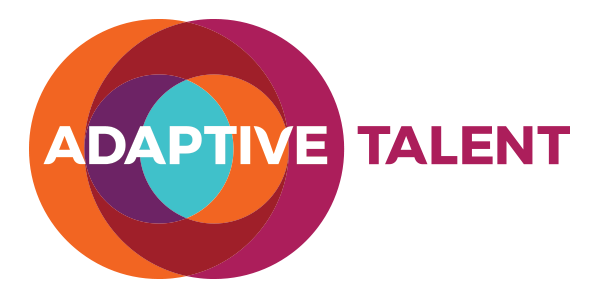The McKinsey article goes into some depth about why they believe people are quitting, and I recommend that people take the time to read it. I’m fascinated by why and how individuals, teams, and organizations adapt because it involves the interplay of psychology, adult development, economics, and organizational development. I’ve also been chatting with a broad group of leaders from different sectors to help them achieve their goals, navigate this employment landscape, and get their arms around their own organization’s development of its capabilities, culture, and people in an integrated, cohesive, mutually beneficial way. People are struggling to adapt and there are definitely patterns that are emerging and the McKinsey article touches on many of them but a few really rang true to me:
Meaning: People are craving meaning in their lives, so an authentic organizational purpose that is used by leaders and employees to orient the team’s focus and how they work together can be a powerful opt-in tool. We live in a dopamine-addicted, attention-starved, overwhelmed society so most adults have not done the inner work to truly understand their values and to make hard decisions to align their life. In other words, be careful your organizational purpose is truly motivational to your executives and team because otherwise the next shiny thing or higher base salary elsewhere will cause people to quit.
Opt-In: This framing is key because it reinforces that employees are voluntarily choosing to work with your team and your leadership needs to reflect that reality. If you’ve ever tried to lead a volunteer organization you vividly understand my point; it’s hard to generate alignment, focus, and accountability unless people treat each other respectfully and stay focused on what matters most.
Go For It: The pandemic and endless scary news has caused people to generally clarify what matters most to them personally as a primary filter for life decisions. So whether that’s living in a place you love, working part time or project based, prioritizing care taking of a loved one, simplifying your life for the time being, or taking a risk and becoming an entrepreneur (to name a few) the employment context and long-formed “traditional” expectations are rapidly changing to adapt to these new priorities. Your willingness to accept these changes likely has an influence on whether you like or dislike the impact on your preferred ways of leading and teaming, and your willingness to adapt your employment practices. I say this while also acknowledging that making this shift is hard work and can feel like an extra “job” on top of making revenue and meeting customer expectations.
Win-Win Partnerships: Articulating an authentic employee value proposition cannot be a static statement or experience. Of course you need to define broad strokes of what every team member should experience, and how your company’s values and brand promise should be emphasized but the application of those aspirations should be in service of the team achieving results that matter together. So if you’ve got some heavy lifting to do with a capability, or a shift to a new business model, or the marketplace has been disrupted by a new offering it’s crucial to be honest about the developmental implications and current state if you want the right people to opt-in to your organization to help you with your mission. Just because something is a mess does not mean it’s not captivating to some employees and in fact that might provide some of the richest, most intriguing talent acquisition tools for the employer and career changing, developmental experiences for the employee.
Form Follows Function: In fact, it’s that clarity of purpose (why we’re doing what we’re doing), mission (what we want to offer), and how we need to develop and operate (the “how” layer) that then informs the nature of the work to be done and implications for workplace flexibility. The emphasis on the team’s desired results, especially cross-functional implications, can be a helpful tool for the team to decide how they want to work, including role design and team practices. The key is for the manager and team to identify the experiments they want to run around these things and the learning they hope to achieve as they create progress. The co-leadership is key here because obviously we want progress and results but sometimes we realize that the new approach, tool, method, whatever is actually creating undesirable and unexpected results. That’s an insight, not a failure and reflects a growth mindset, and placing decision rights with the team (when they are ready for this level of ownership) has many benefits. The more we can help our employees grow their consciousness and capabilities, and in turn for each of them to step up and support others in their journey in a way aligned with key organizational principles, the more likely we are to adapt as an organization and to stay relevant to our stakeholders.
In a following blog post I plan on exploring two metaphors around leaders’ responsibilities towards ongoing organizational development that hopefully might resonate with readers. It’s a simple way of thinking about these things and I hope to hear back from people about what lands with them.
---
Adaptive Talent is a talent consultancy designed to help organizations achieve amazing results and ongoing adaptability. Founded in 2008 and based in Vancouver, Canada we offer retained and contingent search, assessments, training, leadership coaching (1:1 and group), leadership development programs, and culture & organizational development consulting.

